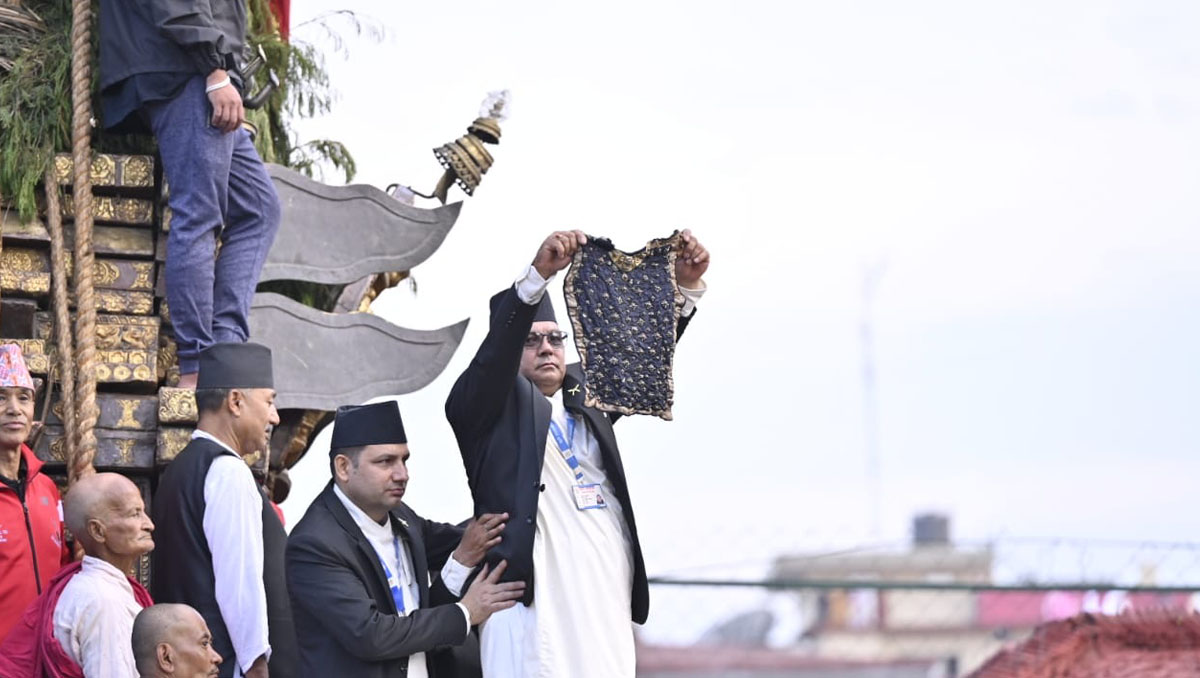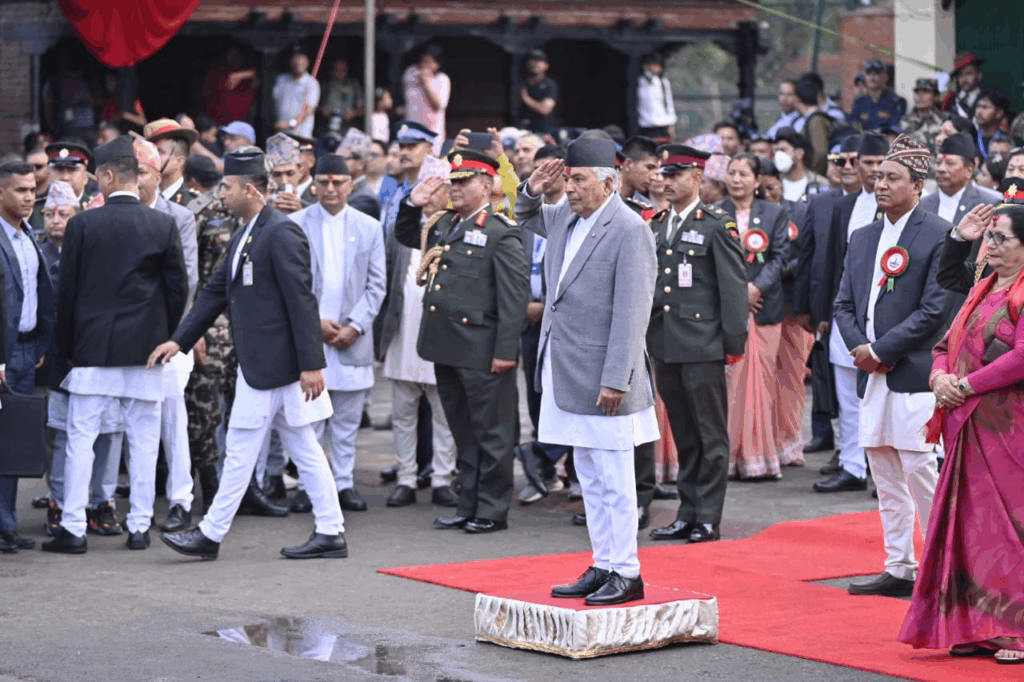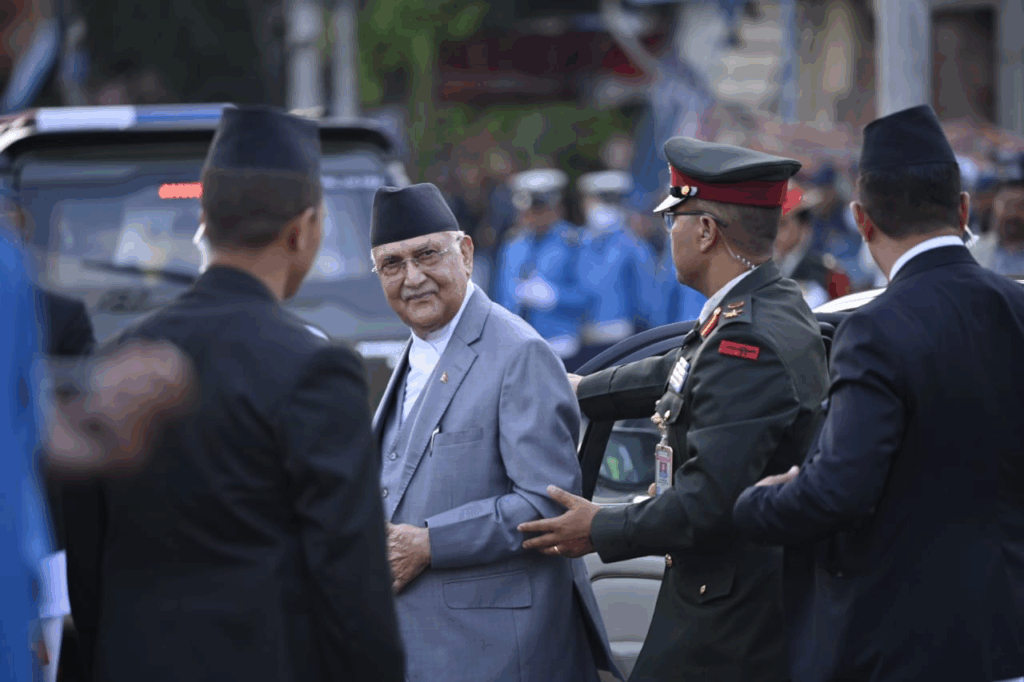

 18.85°C काठमाडौं
18.85°C काठमाडौं

Kathmandu: The sacred Bhoto Jatra, one of the most iconic and culturally rich events of the Kathmandu Valley, was celebrated today in Jawalakhel with the ceremonial display of the revered bhoto (vest) of Rato Machhindranath, the god of rain and compassion. The event marks the grand finale of the Rato Machhindranath Jatra, the Valley’s longest-running festival that began on Baishakh Shukla Pratipada and spans nearly two months.
Thousands of devotees gathered to witness the age-old ritual where the jewel-studded vest is shown from all four sides of the towering chariot. In keeping with tradition, the ceremony is held in the presence of the President of Nepal, Ram Chandra Paudel, and Prime Minister, KP Sharma Oli, and was organized by the Guthi Sansthan in Lalitpur. The government had declared a public holiday in the Kathmandu Valley to honor the occasion.


The Rato Machhindranath Jatra, also known as the festival of Guru Karunamaya or Bung Dyah, is deeply rooted in the spiritual history of the Valley. Celebrated for over 1,600 years, the festival pays homage to the rain god believed to protect agricultural prosperity and ecological balance. The chariot procession winds through Lalitpur and parts of Kathmandu, culminating in today’s ceremony at Jawalakhel.
According to folklore, the tradition of Bhoto Jatra began roughly 800 years ago and is linked to a dramatic tale involving the serpent king Karkotak, his ailing queen, and a farmer mistakenly identified as a healer. After curing the queen’s eye disease with divine aid from Machhindranath, the farmer was rewarded with a ruby-encrusted vest. The story takes a mysterious turn when the vest is stolen, leading to a dispute during a Machhindranath procession. Since no rightful owner could be proven, the vest was entrusted to the deity himself.

To this day, the bhoto is ceremonially displayed annually in the hope that a legitimate claimant may emerge. Yet, as legend has it, no one has ever successfully reclaimed it.